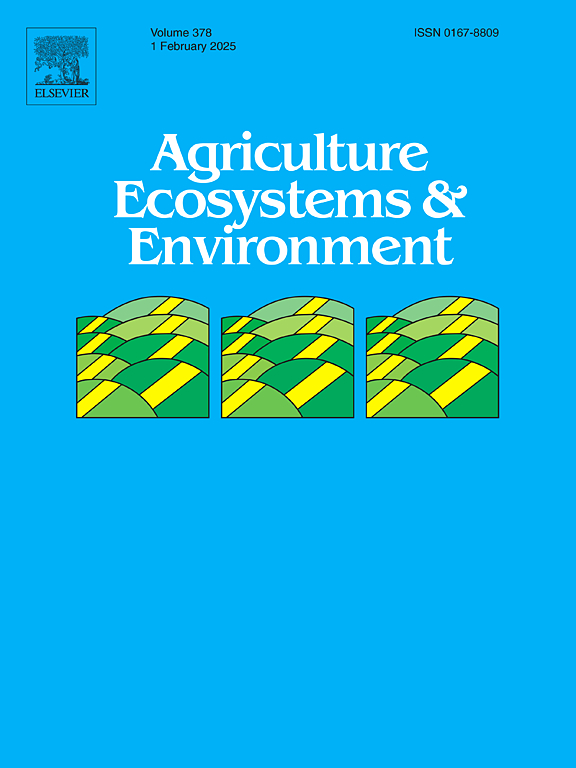“Biocontrol of diamondback moth (Plutella xylostella) in organic crops: Spatial and seasonal dynamics”
IF 6
1区 农林科学
Q1 AGRICULTURE, MULTIDISCIPLINARY
引用次数: 0
Abstract
Biocontrol presents a sustainable alternative to insecticides by using natural enemies to reduce pest populations. However, the occurrence of biocontrol agents and the services that they provide, varies across space and time. Factors that influence service provision for a key economic pest, the diamondback moth (Plutella xylostella) were investigated in field studies on commercial organic farms in southeast Queensland, Australia. Cohorts of the pest were placed on cabbage plants within cages that were either open or closed to natural enemies and then placed at varying distances from adjacent non-crop habitat to determine spatial variation in pest mortality. Seasonal variability was captured in repeated trials over three years. Plutella xylostella mortality was significantly higher in cages open to natural enemies. Marginal death rates due to parasitism from Diadegma semiclausum, which was the only parasitoid reared from larvae, were significantly higher than any other mortality factor. Beta regression models found parasitism and predation were predicted by seasonal, but not spatial treatments. Mortality due to parasitism was highest in cooler seasons, while predation was variable, but significantly lower in cooler seasons. This suggests that P. xylostella populations are primarily regulated by D. semiclausum on organic farms in southeast Queensland, but pest suppression is reduced when warmer temperatures occur, risking pest outbreaks. This study provides rare direct quantification of the contribution of arthropod natural enemies to pest population suppression on farms. The deployment of additional biocontrol agents may increase this ecosystem service and its stability across seasons.

求助全文
约1分钟内获得全文
求助全文
来源期刊

Agriculture, Ecosystems & Environment
环境科学-环境科学
CiteScore
11.70
自引率
9.10%
发文量
392
审稿时长
26 days
期刊介绍:
Agriculture, Ecosystems and Environment publishes scientific articles dealing with the interface between agroecosystems and the natural environment, specifically how agriculture influences the environment and how changes in that environment impact agroecosystems. Preference is given to papers from experimental and observational research at the field, system or landscape level, from studies that enhance our understanding of processes using data-based biophysical modelling, and papers that bridge scientific disciplines and integrate knowledge. All papers should be placed in an international or wide comparative context.
 求助内容:
求助内容: 应助结果提醒方式:
应助结果提醒方式:


